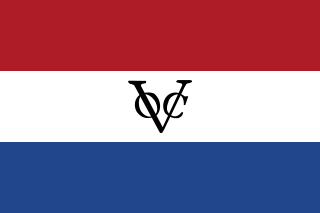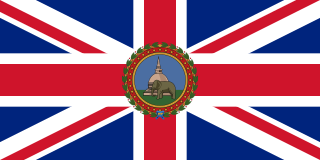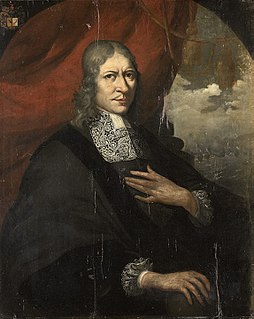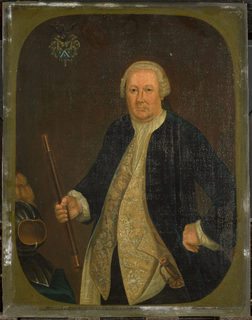
Joan Maetsuycker was the Governor of Zeylan during the Dutch period in Ceylon and Governor-General of the Dutch East Indies from 1653 to 1678. He was appointed as Governor of Zeylan on 24 March 1646 and was governor until 26 February 1650. He was succeeded by Jacob van Kittensteyn.

Gustaaf Willem, Baron van Imhoff was a Dutch colonial administrator for the Dutch East India Company (VOC). He served as Governor of Ceylon from 1736 to 1740 and as Governor-General of the Dutch East Indies from 1743 until his death in 1750 at Istana Cipanas.

Bengal was a directorate of the Dutch East India Company in Mughal Bengal between 1610 until the company's liquidation in 1800. It then became a colony of the Kingdom of the Netherlands until 1825, when it was relinquished to the British according to the Anglo-Dutch Treaty of 1824. Dutch presence in the region started by the establishment of a trading post at Pipili in the mouth of Subarnarekha river in Odisha. The former colony is part of what is today called Dutch India. 50% of textiles and 80% of silks were imported from Bengal to the Dutch Empire.

The Governor of Ceylon was the representative in Ceylon of the British Crown from 1795 to 1948. In this capacity, the governor was president of the Executive Council and Commander-in-Chief of the British Forces in Ceylon. The governor was the head of the British colonial administration in Ceylon, reporting to the Colonial Office.

Dutch Ceylon was a governorate established in present-day Sri Lanka by the Dutch East India Company. Although the Dutch managed to capture most of the coastal areas in Sri Lanka they were never able to control the Kandyan Kingdom located in the interior of the island. Dutch Ceylon existed from 1640 until 1796.

Rijcklof Volckertsz. van Goens was the Governor of Zeylan and Governor-General of the Dutch East Indies. He was the Governor of Zeylan from 12 May 1660 to 1661, then in 1663 and finally from 19 November 1664 to 1675 during the Dutch period in Ceylon. He was also served as Council Member of India during 1679. Van Goens’ managed to monopolize the cinnamon trade, get hold of the Malabar pepper and drive away the Portuguese from Ceylon and the Coromandel Coast for the VOC.

Petrus Albertus van der Parra was Governor-General of the Dutch East Indies from 1761 to 1775.

Dutch Malabar,(Dutch:Nederlandse Malabar, Malayalam:ഡച്ച് മലബാർ) also known by the name of its main settlement Cochin, was the title of a commandment of the Dutch East India Company on the Malabar Coast between 1661 and 1795, and is part of what is today collectively referred to as Dutch India. Dutch presence in the region started with the capture of Portuguese Quilon, and ended with the occupation of Malabar by the British in 1795. They possessed military outposts in 11 locations: Alleppey, Ayacotta, Chendamangalam, Pappinivattom, Ponnani, Pallipuram, Cranganore, Chetwai, Cannanore, Cochin, and Quilon.

Johan Gerard van Angelbeek was a Dutch colonial officer who commanded Dutch forces on the island of Ceylon during the colony's final year in the Dutch Empire before its seizure by a British expeditionary force.
Jacob van Kittensteyn was the Governor of Dutch Ceylon during the Dutch period in Ceylon. He was appointed on 26 February 1650 and was Governor until 11 October 1653. He was succeeded by Adriaan van der Meyden.
Johannes Hertenberg was the 17th commander of Dutch Malabar from 1716 to 1723 and the 19th Dutch Governor of Ceylon from 1723 until his death.
Petrus Vuyst or Vuijst was the 20th Governor of Ceylon during the Dutch colonial period.
Gualterus "Wouter" Woutersz was commander of Jaffna for the Dutch East India Company and interim Governor of Dutch Ceylon between the departure of Stephanus Versluys on 25 August 1732 and the arrival of Jacob Christiaan Pielat on 2 December 1732.
Jacques Christian or Jacob Christiaan Pielat was the 22nd Governor of Ceylon during the Dutch colonial time from 2 December 1732 until 27 January 1734.
Willem Maurits Bruijninck was the 25th Governor of Ceylon during the Dutch period in Ceylon. He was appointed on 12 March 1740 and was Governor until 8 January 1742. He was succeeded by Daniel Overbeek.
Julius Valentijn Stein van Gollenesse was the 27th Dutch Governor of Ceylon during the Dutch period in Ceylon. He was appointed on 11 May 1743 and was Governor until 6 May 1751. He was succeeded by Gerard Joan Vreeland.
Gerard Joan Vreeland was the 28th Governor of Ceylon during the Dutch period in Ceylon. He was appointed on 6 May 1751 and was Governor until 26 February 1752. He was succeeded by acting Governor Jacob de Jong.
Jacob de Jong was an acting Governor of Ceylon during the Dutch period in Ceylon. He was appointed on 26 February 1752 and was Governor until 10 September 1752. He was succeeded by Joan Gideon Loten.

Iman Willem Falck was a Dutch colonial governor who served as the 32nd Governor of Zeylan during the Dutch period in Ceylon. He was appointed on 7 August 1765 and was Governor until 5 February 1785. He was succeeded by Edward Hughes.

Willem Jacob van de Graaf was the 35th Dutch Governor of Ceylon during the Dutch period in Ceylon.